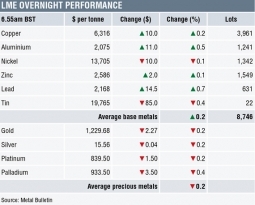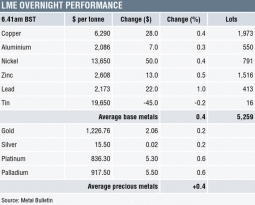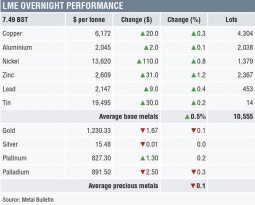You’ve heard your broker talk about MiFID II but what does it mean for you and other industrial users wanting to hedge metals price risk?
The UK might be leaving the EU but the metals trade in London cannot avoid MiFID II (Markets in Financial Instruments Directive II).
For now, brokers and banks are spending large sums and many hours to meet the deadlines from Brussels. These come into force on January 3; whatever the shape of future UK/EU relations, they will set the scene for the next few years.
The first MiFID aimed to create a single financial market in the EU. Its effects have been profound; for example, ending the monopoly on equities in UK trading enjoyed by the London Stock Exchange. MiFID II, which aims to increase competition and transparency, will now change how futures are traded.
There are myriad new administrative rules that brokers and exchanges must implement before the end of the year. Many of these might seem arcane or bureaucratic; for example the time to book trades agreed on the telephone must be cut. Taken together, and reflecting the theme of “transparency”, the overall effect is likely to be transformative in the metals markets.
The opportunity for the market arises in two key areas – price discovery and clearing. If MiFID II evolves as the politicians intend, it will provide significant opportunities to boost liquidity and efficiency in metals trading.
Key to understanding how metals trading will change is the MiFID II concept of “best execution”. MiFID II takes aim at so-called “dark pools” of liquidity, when trades take place away from “lit” exchanges where everybody can see what is traded. While this should be good for users of the market – they will be able to see more bids and offers before they trade – it begs the question as to how brokers and banks should best display or provide access to those prices.
From January, banks will need to prove that they have supplied “best execution” for the trades they book with customers. Under the current market structure in metals, there several issues that must be resolved.
Were there just one exchange for metals trading (and no over-the-counter business), it would be relatively straightforward. But there are many pools of liquidity, either off exchange between members or between members and customers. Additionally, many metal contracts are illiquid through low participation or thinly traded dates, making them harder to trade in “lit” venues.
To achieve “best execution” on illiquid dated trades, brokers may need to reconsider how customer requests are managed, and, in particular, how they supply information on pricing.
That’s good news for customers who will now have greater choice over how they book their trades and a better understanding of competing trades in the market. For brokers, meanwhile, it is likely to lead to a bigger pool of business.
As regards clearing, under MiFID II it will become possible to clear futures contracts at multiple venues. It remains to be seen how practical it will be to manage this in practice.
For market users, to maintain accounts at multiple clearers may not be the most effective use of capital and could feed through to higher, rather than lower, costs in some circumstances.
Competition is more likely to be driven at the execution level, with trades being routed from multiple venues into highly efficient and market specific clearing houses. By unbundling “best execution” and “clearing”, there will be greater transparency over price formation at the trading level, and greater transparency over capital costs at the clearing level.
Clearing will become the central point around which other worlds orbit, with the MiFID II changes encouraging evolution around execution, price discovery and market participation. Each sphere will be able to develop independently but will be drawn by gravity to each other and aligned to the mass that is clearing.
For now MiFID II might seem daunting but in time it will be seen as the launch pad for the expansion of the metals trading universe after years of contraction.
Chris Evans is the commercial director of NFEx Markets.
The post LME WEEK 2017: Metals after MiFID II appeared first on The Bullion Desk.
Read More
Source: Bullion Desk News








